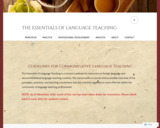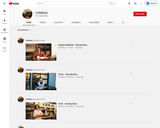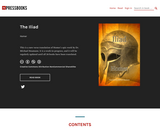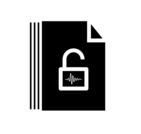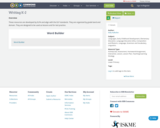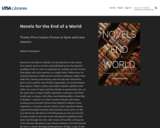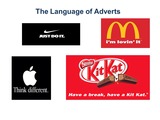Twenty-First-Century Fiction in Spain and Latin America
Short Description:
Novels for the End of a World is an introduction to the twenty-first century novel as written and published across the Spanish-speaking world. It's also an argument for reading narrative fiction from Spain and Latin America as a single entity. Where once we analyzed literature within narrow national traditions, today’s best-seller lists, literary prize money, and even the tales themselves point to the need for more holistic approaches. So too the themes they explore. Today’s writers and readers inhabit a global world where our sense of space and time shrinks at exponential rates. At the same time so much of daily experience continues to be lived locally and, as always, with often overwhelming affect. Given that, it shouldn´t surprise us to find common threads and themes running across narrative fiction from Madrid to Mexico, from Argentina to Asturias, and yet to find at each stop these themes registered through intensely and intimately local stories. In this way, Novels for the End of a World becomes at once an overview of major trends in narrative across the Spanish-speaking world and a trip through the rich, wide variety of local life. Arising out of this literary adventure is one thread common to all: that beyond the end is a barely distinguishable glimmer of light, a sign of new ways for a new world.
Long Description:
Novels for the End of a World is an introduction to the twenty-first century novel as written and published across the Spanish-speaking world. It is also an argument for reading narrative fiction from Spain and Latin America as a single entity. Where once we analyzed narrative fiction within narrow national or continental traditions, today’s best-seller lists, literary prize money, and even the fictions themselves point to the need for more holistic approaches. Today Sergio Pitol reads Vila-Matas while Cercas writes of Bolaño reading Cercas. Meanwhile Spanish publishing houses such as Anagrama and even Planeta dole out prize money to increasingly young and unknown Latin American authors. For general readers searching out their latest read on sites like Amazon or Casa del Libro, national distinctions simply don’t exist. To search for Luiselli is to discover Fernández Mallo, while Marías will lead you to Rosero. Where they´re from doesn´t feature and likely doesn´t much matter.
While a Bourdeauian description of this newly broadened field of cultural production, or Spanish-language Republic of Letters—to borrow two potentially useful terms—needs to be developed, Novels for the End of a World is a more humble attempt to practice in a limited fashion what it might look like to read novels from across the Spanish-speaking world as a whole. Novels reads one work against another and then another. While it pays plenty of attention to historical context, it gives little heed to local literary traditions. It assumes rather that these works can and should be read as addressing common concerns across a single cultural and linguistic milieux.
The monograph´s name is inspired in the title of Mexican author Yuri Herrera´s Signs Preceding the End of the World (2011), a reading of which headlines the study. The guiding thematic of the work is a common anxiety surrounding the notion of an end—of times, of places, of meanings, and even of lives. In Herrera´s novel both traditional Mexican society and traditional Mexico/USA divisions collapse under the weight of so much migration—material and virtual. The divisions give way under the weight of hybrid world and identities so novel that they exceed the very possibilities of the language that would describe them. In some novels the sense of an ending is manifest via readings of economic crisis (Gopeguí´s Reality; Eloy Martínez´s Tango Singer; Aira´s Shantytown). In others the ending is more violent (Rosero´s The Armies; Rey Rosa´s Enchanted Stones; Roncagliolo´s Red April; Pron´s The Spirit of My Father and Zambra´s Ways of Going Home). Still others register a more sinister, because seemingly innocuous, collapse brought on by political and cultural hegemonies (Lalo´s Simone; Guerra´s Everyone Leaves; Santos Mayra´s Any Wednesday I´m Yours). The study concludes with a look at a collection of short stories by a “Spanish” artist writing in Asturian, Xuan Bello, whose intensely local yet equally cosmopolitan work, situated within the illustrative context of contemporary Spanish economic, political, and cultural development, may offer a final “sign at the end,” a way forward when all paths—economic, political, and cultural—appear to have come to naught.
Word Count: 109324
ISBN: 9780991504374
(Note: This resource's metadata has been created automatically by reformatting and/or combining the information that the author initially provided as part of a bulk import process.)
